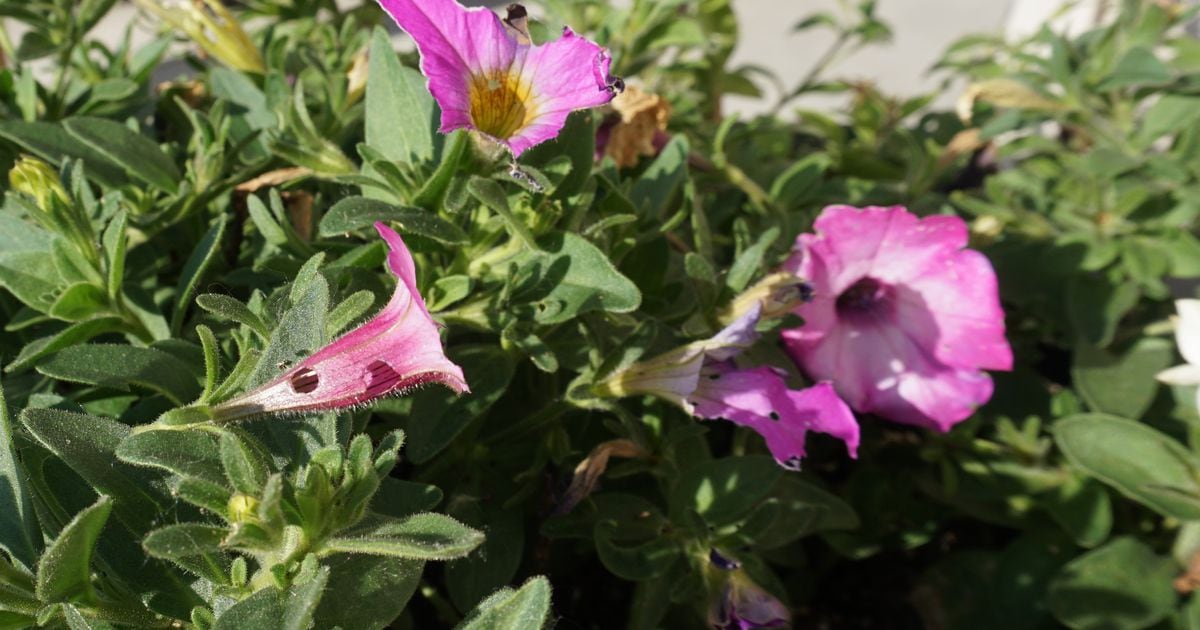
One problem I am noticing is holes in my petunias. I have been observing them for a couple of weeks and the problem seems to be worsening.
I had my suspicions as to what was causing the holes, but I confirmed my suspicions this past Tuesday. I was checking out the plants and found the culprit, the tobacco budworm, also known as the petunia budworm.
This green caterpillar with black spots feeds on the buds and flowers of petunias, germaniums, and calibrachoa. The newly hatched caterpillars eat tiny holes in the buds and the leaves. When the flower buds open, there are holes all over the flower.
As they mature, they eat more, sometimes consuming an entire flower quickly. The one I spotted is about a half-inch long and has chewed holes in many flowers. In a few, they ate about half.
The adult moth is one and a half inches wide with light green wings and 4 wavy, cream-colored bands. After about a month of feeding, they drop to the soil and pupate. And guess what, they have a second generation that emerges in the summer and starts all over again.
So, what this means is this: Try to eliminate as many of this first generation as possible. Watch during the summer for tiny holes to appear again in leaves and flowers to get them while they are young.
It is also very important that you stop using the same soil in the same container with petunias or geraniums for several years. It means that if they are in the landscape beds, stop using these plants in these beds for three to five years. Rotate your crop so that you starve out the caterpillars.
Some pesticides can be used and should be used to stop the caterpillars. You won’t likely control the newly hatched as they burrow in the buds and are not affected by pesticides (unless they are systemic).
You can use caterpillar sprays on the flowers and foliage to kill larger instars (stages). Sprays containing pyrethroids with the active ingredients bifenthrin, cyfluthrin, beta-cyfluthrin, etc. on the label are effective but may need to be reapplied. The label will also say for caterpillars and for use on ornamental plants.
I emphasize NOT planting petunias, geraniums, or calibrachoas in the same soil next season. Rotate to something else and starve those critters!
Pamela Corle-Bennett is the state master gardener volunteer coordinator and horticulture educator for Ohio State University Extension. Contact her by email at bennett.27@osu.edu.
Credit: Contributed
Credit: Contributed
Source: daytondailynews.com

Leave a Reply